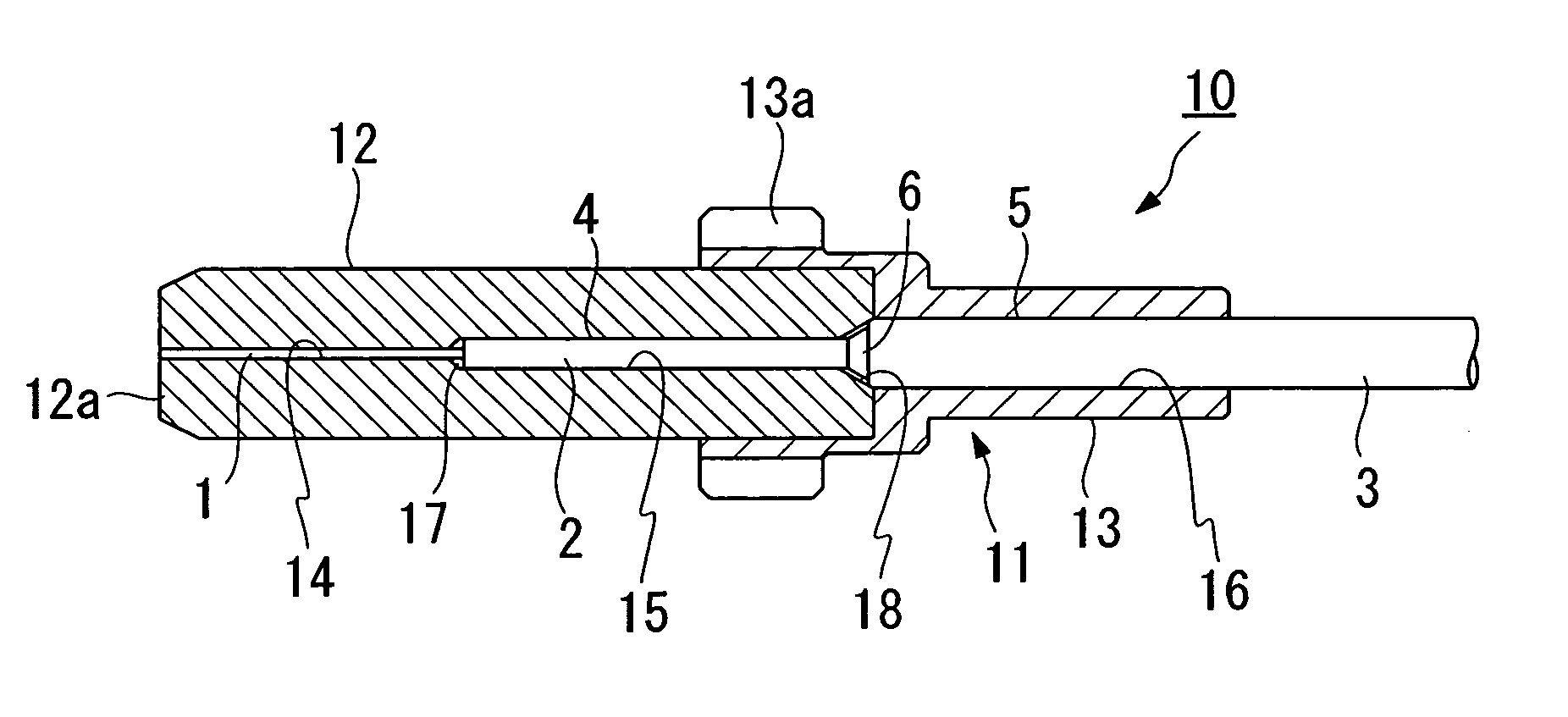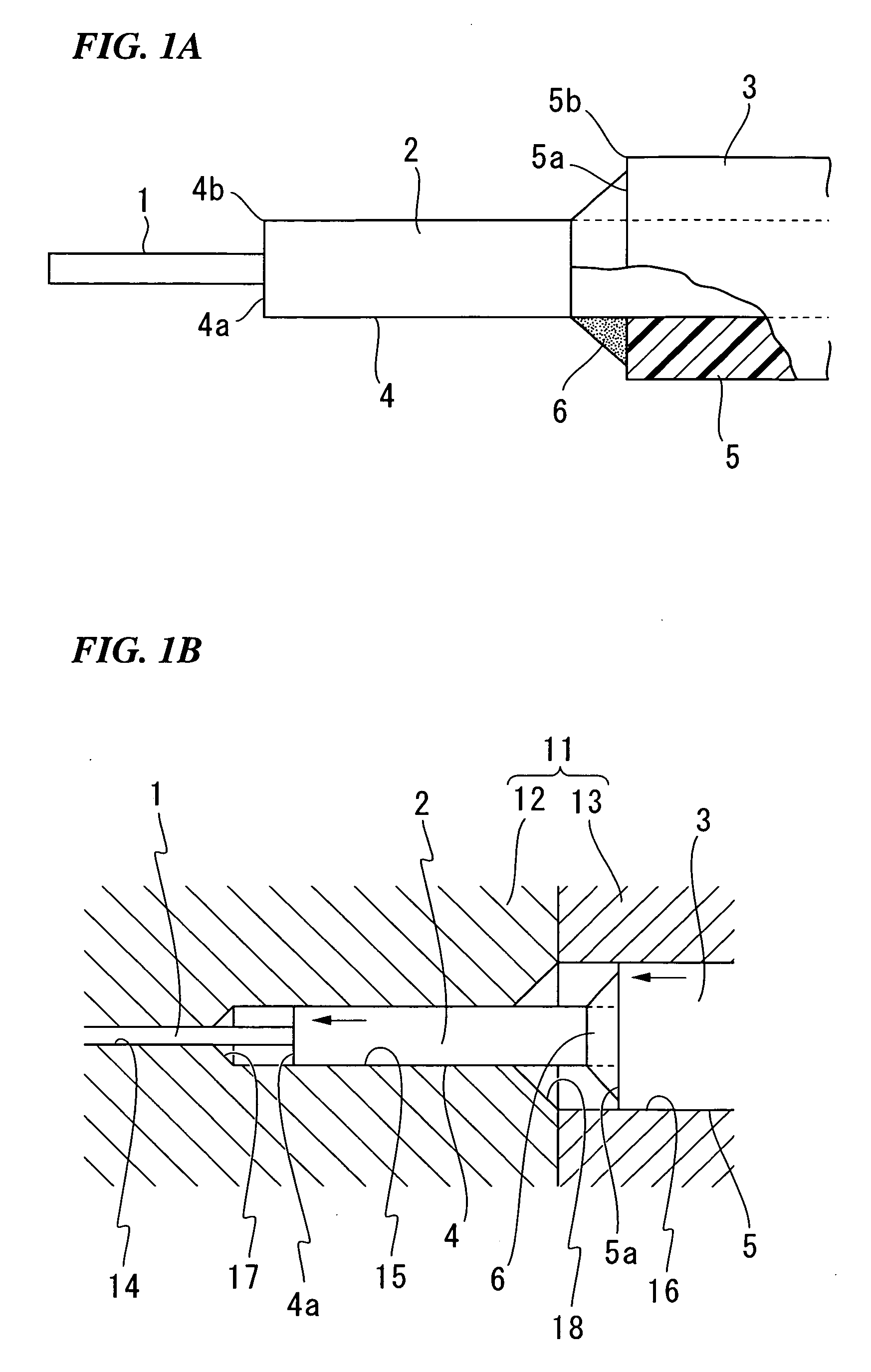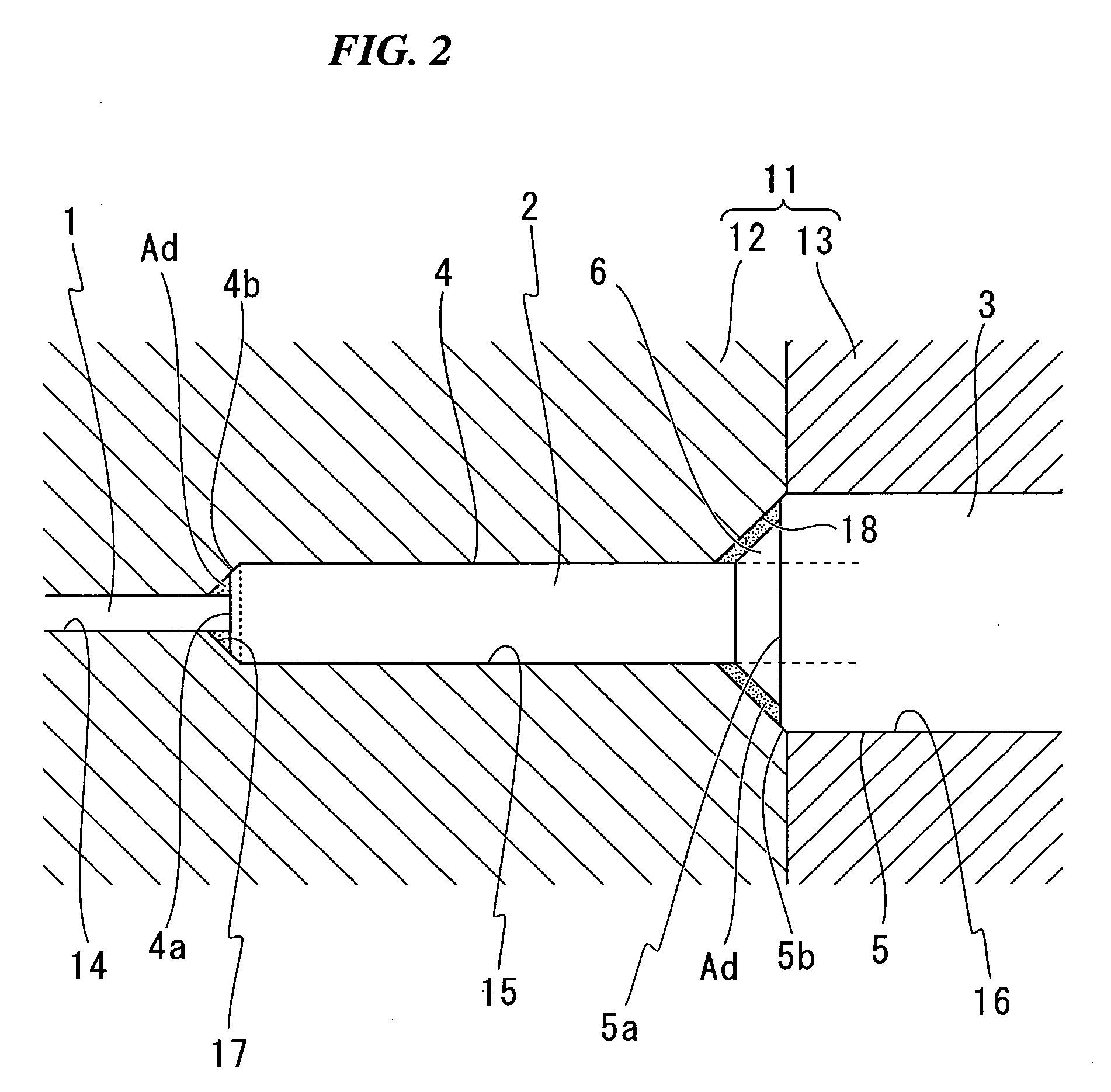Method of producing a ferrule with an optical fiber
a technology of optical fiber and ferrule, which is applied in the direction of optics, instruments, optical light guides, etc., can solve the problems of deterioration of optical fiber characteristics, uneven application of bare optical fiber, and fear of external forces, so as to achieve control the effect of worsening of characteristics
- Summary
- Abstract
- Description
- Claims
- Application Information
AI Technical Summary
Benefits of technology
Problems solved by technology
Method used
Image
Examples
Embodiment Construction
[0040] With reference to the attached figures, exemplary embodiments of the present invention will now be described below. The described exemplary embodiments are intended to assist the understanding of the invention, and are not intended to limit the scope of the invention in any way.
[0041]FIGS. 1A and 1B are views for explaining a method of producing a ferrule with an optical fiber according to the present invention. FIG. 1A is a fragmentary view showing a main portion of a coated optical fiber in which an adhesive portion is previously formed on an end of a reinforcing pipe by means of adhesive being cured. FIG. 1B is a longitudinal sectional view showing an appearance of the ferrule into which the coated optical fiber shown in FIG. 1A is inserted. FIG. 2 is a longitudinal sectional view showing a main portion of the ferrule with the optical fiber. Incidentally, in FIG. 1B, the adhesive portion for bonding an inner surface of a hole of the ferrule and a coated optical fiber is n...
PUM
 Login to View More
Login to View More Abstract
Description
Claims
Application Information
 Login to View More
Login to View More - R&D
- Intellectual Property
- Life Sciences
- Materials
- Tech Scout
- Unparalleled Data Quality
- Higher Quality Content
- 60% Fewer Hallucinations
Browse by: Latest US Patents, China's latest patents, Technical Efficacy Thesaurus, Application Domain, Technology Topic, Popular Technical Reports.
© 2025 PatSnap. All rights reserved.Legal|Privacy policy|Modern Slavery Act Transparency Statement|Sitemap|About US| Contact US: help@patsnap.com



